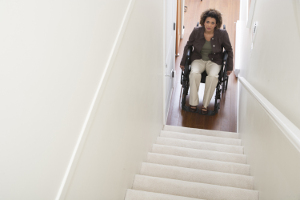ADA Education, ASID and IIDA, and a Fight in Washington
On January 30th, 2018 a bill passed the House without changes that drove the design community to go to battle with Washington. This bill has to do with changing current ways that a person with disabilities can take action against any property that do not have accommodations. The ADA Education and Reform Act of 2017 is being opposed by the ASID and the IIDA. In a ASID and the IIDA joint statement, the state that it “…disincentives businesses to build or update spaces according to these principles.”
We know that architects and design professionals have accessibility in mind when they design. While retrofitting a building to be brought to code might be a harder issue, the design community has long been behind the move to a more accessible built environment for all.
The ACLU has also come out against the Act with a list of ‘Facts and Myths’ about the bill. In particular, they say (in regard to difficulties in complying with the ADA regulations) “Complying with the ADA is no more burdensome than complying with other laws and ample resources exist to aid compliance.” While this is true, we know that building product manufacturers, architects, design professionals, and engineers face many burdens in ensuring that they comply with the regulations passed down by the ADA.
There are many ways for architects and design professionals to know the latest requirements of the ADA regulations. Continuing education in accessibility has been required for years for architects, with California requiring 5 hours every two years, and Texas requiring 1 hour a year to be focused on accessibility or barrier free design. With all of these requirements for professionals in the architecture and design space, education providers need to step up and lead the way.
Architects like those at The McIntosh Group have long known that the architectural community, including the designers, are the foundational point at which change will be made. While designing and conforming buildings to meet ADA compliancy, they also created online courses for which architects and specifiers can learn what they need to know, and earn their required credits.
Whether or not the bill can pass the Senate, ADA requirements must be met. This is not just because it’s the law. Architects and designers know that sustainable building practices are not usually followed due to laws being passed. Practices that support sustainable building are followed because it’s the best thing for our built environment, and for our world. That is why the ADA requirements must be held to. As they stated in their joint statement, “It is our belief that design—residential or commercial, for private or public intent—truly affects everyone. This is why we unwaveringly advocate for universal design, a practice that seeks to create environments that can be accessed, understood, and used to the greatest extent possible regardless of age, sex, size or ability.”
Whether you are part of the ASID, AIA, USGBC, or are just an architect or designer for our built environment, education about the ADA requirements will help everyone it touches. How are you educating your team on the ADA requirements?
For more information or to discuss the topic of this blog, please contact Brad Blank





